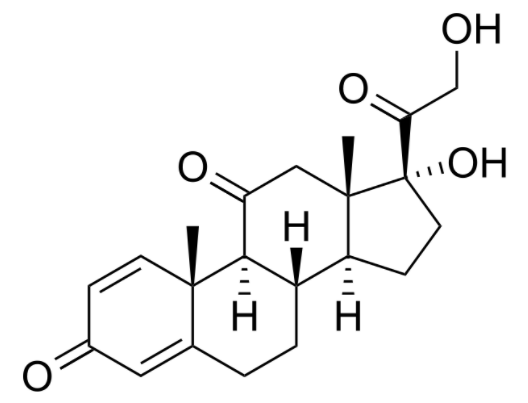Playlist
Show Playlist
Hide Playlist
CIDP: Variants
-
Slides Chronic Inflammatory Demyelinating Polyneuropathy.pdf
-
Download Lecture Overview
00:01 <b>There are a number of</b> <b>variants of CIDPs.</b> <b>So there's similar processes</b> <b>but affect patients differently</b> <b>that I'd like you to understand.</b> <b>We see motor predominant variants</b> <b>and sensory predominant variants,</b> <b>and they can be</b> <b>symmetric or multifocal.</b> <b>CIDP is a motor</b> <b>predominant condition.</b> <b>There's prominent weakness</b> <b>with minimal sensory changes,</b> <b>and it is symmetric.</b> <b>In contrast, DADS</b> <b>or distal acquired demyelinating</b> <b>sensory neuropathy</b> <b>is a sensory involving neuropathy</b> <b>that is also symmetric.</b> <b>So patients report</b> <b>distal sensory symptoms</b> <b>really with a paucity of weakness.</b> <b>In contrast to the</b> <b>symmetric disorders,</b> <b>the multifocal disorders are</b> <b>multifocal motor neuropathy,</b> <b>which is exactly</b> <b>what the name says.</b> <b>It's a multifocal,</b> <b>motor predominant neuropathy.</b> <b>Patients present with</b> <b>multiple areas of nerve dysfunction</b> <b>in different myotomal patterns,</b> <b>and is an inflammatory disorder.</b> <b>And that contrasts with MADSAM</b> <b>or multifocal acquired demyelinating</b> <b>sensory and motor neuropathy</b> <b>which is multifocal,</b> <b>with sensory and motor involvement.</b> <b>And all of these are</b> <b>inflammatory polyneuropathies.</b> <b>Let's talk through some</b> <b>of the different features</b> <b>of each of these CIDP variants.</b> <b>Multifocal motor neuropathy</b> <b>is asymmetric,</b> <b>there's no sensory symptoms.</b> <b>It is a motor neuropathy.</b> <b>We can see</b> <b>proximal and distal involvement.</b> <b>Deep tendon reflexes are induced</b> <b>but often in a multifocal pattern.</b> <b>The disease course is slowly</b> <b>progressive often over years.</b> <b>It is an inflammatory disorder.</b> <b>So we see elevated CSF protein.</b> <b>And occasionally with</b> <b>antiganglioside antibodies,</b> <b>there is a response to IVIg</b> <b>but we don't see a</b> <b>response to steroids.</b> <b>In fact, this is one</b> <b>of the only inflammatory disorders</b> <b>that can present with</b> <b>worsening of symptoms</b> <b>with steroid initiation, which</b> <b>is very important to remember.</b> <b>Next, motor neuron disease.</b> <b>This is often asymmetrical.</b> <b>We don't see sensory involvement.</b> <b>We can see proximal</b> <b>and distal involvement.</b> <b>Deep tendon reflexes</b> <b>can be increased</b> <b>in motor neuron disease</b> <b>like Lou Gehrig disease</b> <b>or a Amyotrophic lateral sclerosis</b> <b>where there's peripheral and</b> <b>central motor neuron disorders.</b> <b>This is often more</b> <b>rapidly progressive</b> <b>than multifocal motor neuropathy.</b> <b>We can see elevated protein</b> <b>but that's uncommon.</b> <b>10% of patients capacity</b> <b>will develop</b> <b>antiganglioside antibodies</b> <b>and there's no response</b> <b>to IVIg or steroids.</b> <b>CIDP in contrast is symmetrical.</b> <b>We do see sensory involvement.</b> <b>Patients are diffusely areflexic</b> <b>with a slightly more progressive</b> <b>course that can be relapsing</b> <b>and patients respond</b> <b>to IVIg and steroids.</b> <b>And then finally MADSAM,</b> <b>or multifocal acquired</b> <b>demyelinating sensory</b> <b>and motor neuropathy.</b> <b>It's multifocal.</b> <b>So there's an asymmetric pattern.</b> <b>We do see sensory symptoms,</b> <b>including pain,</b> <b>reflexes are reduced.</b> <b>There's progressive</b> <b>and relapsing course</b> <b>that we can see with that</b> <b>protein is often elevated,</b> <b>and this can respond</b> <b>to IVIg and steroids.</b> <b>So let's talk through some</b> <b>of these CIDP variants</b> <b>in slightly greater detail.</b> <b>DADS is distal acquired</b> <b>demyelinating symmetric neuropathy.</b> <b>It is a distal sensory only variant</b> <b>of CIDP.</b> <b>It tends to be symmetric like CIDP,</b> <b>with absent deep tendon reflexes.</b> <b>Motor symptoms are not</b> <b>present or prominent at all.</b> <b>And there's a predominance</b> <b>of sensory neuropathy.</b> <b>Some of the key features.</b> <b>This is distal as opposed</b> <b>to the proximal involvement</b> <b>in the other conditions.</b> <b>Nerve conduction studies shows</b> <b>prolonged distal latencies</b> <b>often with conduction block</b> <b>because it's inflammatory,</b> <b>and our LP does show</b> <b>increased protein.</b> <b>The treatment here,</b> <b>we see variable response</b> <b>to corticosteroids</b> <b>and can use IVIg and plasmapheresis</b> <b>as well as steroid sparing agents</b> <b>in this inflammatory neuropathy.</b> <b>Now, let's talk about</b> <b>MADSAM,</b> <b>or multifocal acquired</b> <b>demyelinating sensory</b> <b>and motor polyneuropathy.</b> <b>This is a multifocal sensory</b> <b>and motor polyneuropathy.</b> <b>It's chronic and progressive</b> <b>with multiple nerves</b> <b>that are involved in</b> <b>an asymmetric pattern.</b> <b>There's motor involvement and</b> <b>sensory involvement with weakness,</b> <b>reduced deep tendon reflexes</b> <b>and sensory abnormalities.</b> <b>The typical description</b> <b>of this condition</b> <b>it's immune mediated</b> <b>polyneuropathy.</b> <b>It presents often with</b> <b>a subacute onset course</b> <b>and then it can be progressive</b> <b>and relapsing over time.</b> <b>And importantly,</b> <b>we see length-dependent sensory</b> <b>neuropathy and areflexia.</b> <b>In terms of diagnosis, our nerve</b> <b>conduction study shows asymmetry,</b> <b>which is very important and</b> <b>differentiates it from CIDP.</b> <b>The LP shows inflammation</b> <b>with elevated protein,</b> <b>and there's variable</b> <b>response to corticosteroids,</b> <b>IVIg, and plasmapheresis.</b> <b>Then multifocal motor neuropathy.</b> <b>This is a multifocal motor</b> <b>predominant neuropathy</b> <b>that follows</b> <b>a chronic progressive course.</b> <b>It is asymmetric</b> <b>given the multifocal pattern</b> <b>and there is exclusively</b> <b>motor nerve involvement.</b> <b>This is degenerative</b> <b>more than inflammatory.</b> <b>So we don't see all of</b> <b>those inflammatory findings</b> <b>and protein is typically</b> <b>not elevated in the spinal tap.</b> <b>Other features include</b> <b>asymmetric neuropathy</b> <b>WITHOUT sensory changes.</b> <b>We look on our</b> <b>nerve conduction study</b> <b>for conduction block.</b> <b>Motor abnormalities</b> <b>with normal snaps,</b> <b>normal sensory responses.</b> <b>And typically a treatment</b> <b>is focused on IVIg</b> <b>and cyclophosphamide</b> <b>as steroids can</b> <b>worsen this condition.</b> <b>So let's summarize</b> <b>some of the treatments</b> <b>we use for CIDP and its variant.</b> <b>For CIDP, we think about prednisone</b> <b>and we treat acute exacerbations</b> <b>with IVIg and plasmapheresis.</b> <b>For DADS, we use prednisone and</b> <b>also use IVIg and plasmapheresis,</b> <b>particularly for fulminant</b> <b>presentations, or worsening</b> <b>For multifocal motor neuropathy,</b> <b>this worsens with prednisone.</b> <b>And so we really focus</b> <b>our treatment efforts</b> <b>around IVIg and plasmapheresis.</b> <b>And MADSAM is treated</b> <b>with prednisone</b> <b>and IVIg and plasmapheresis</b> <b>in selected cases.</b>
About the Lecture
The lecture CIDP: Variants by Roy Strowd, MD is from the course Chronic Inflammatory Demyelinating Polyneuropathy (CIDP).
Included Quiz Questions
Which of the following is a variant of chronic inflammatory demyelinating polyneuropathy?
- Multifocal acquired demyelinating sensory and motor polyneuropathy
- Acute motor axonal neuropathy
- Miller Fisher Syndrome
- Guillain-Barré syndrome
- Diabetic polyneuropathy
Which of the following chronic inflammatory demyelinating polyneuropathy (CIDP) variants and its clinical features is paired correctly?
- Distal acquired demyelinating symmetric - only distal involvement
- Multifocal acquired demyelinating sensory and motor neuropathy - symmetrical involvement
- Multifocal motor neuropathy - inflammatory markers typically seen in CSF
- CIDP - multifocal presentation
- Multifocal acquired demyelinating sensory and motor neuropathy - worsening with prednisone
A course of steroids may worsen which of the following?
- Multifocal motor neuropathy (MMN)
- Multifocal acquired demyelinating sensory and motor polyneuropathy (MADSAM)
- Chronic inflammatory demyelinating polyneuropathy (CIDP)
- Distal acquired demyelinating sensory neuropathy (DADS)
Customer reviews
5,0 of 5 stars
| 5 Stars |
|
5 |
| 4 Stars |
|
0 |
| 3 Stars |
|
0 |
| 2 Stars |
|
0 |
| 1 Star |
|
0 |




